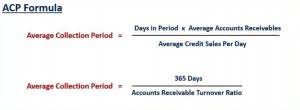Sales- and Usage-Based Royalties in ASC 606

Although the royalty exception sets a limit on the maximum amount of revenue that might be recognised, this does not mean that this maximum amount should always be recognised. The entity may therefore need to defer some of this revenue to satisfy the second test within the royalty exception recognition criteria. In practice, in the scenario above, this might be done by applying an average expected royalty rate to calculate the revenue deferral. This may require an element of estimation of sales/usage-based royalties where there is a timing difference between the sale or usage occurring, and when these reports by the customer are received by the licensing entity.
- TV shows and films remain fundamental to the entertainment industry, generating substantial royalties for content creators.
- When pharmaceutical companies engage in licensing agreements, accurate financial reporting is crucial.
- Royalties exist because they enable the owner to benefit from their work and their property.
- With increasing frequency, PLS companies have considered monetizing revenues from existing products.
- SUTTLE & STALNAKER PLLCOur strong team of experienced tax, audit, accounting, and advisory professionals are invested in helping you reach your goals.
- This Treasury regulation characterizes licensing and franchise costs as indirect costs that are capitalized to inventory.
- The reader accepts the information as is and assumes all responsibility for the use of such information.
Time Value of Money

Such disclosures are integral to understanding the volatility and timing differences in royalty income, which can be significant depending on the industry and specific contractual arrangements. balance sheet The process of recognizing royalty revenue also involves regular reassessment of the expected total royalties over the life of the agreement. This is because initial estimates may change due to factors such as market conditions, the licensee’s performance, and technological advancements. Depending on the jurisdiction, royalty payments may be subject to withholding taxes, affecting net revenue for rights holders.
- Measuring progress toward satisfying a performance obligation can involve output methods (e.g., units delivered) or input methods (e.g., costs incurred).
- These royalties are typically expressed as a percentage of revenue, profit, or a flat fee.
- This ensures transparency, reduces potential disputes, and accurately reflects the financial impact of the royalty arrangements.
- For example, a music label might implement robust tracking systems for streaming revenues to ensure accurate royalty payments to artists.
- For example, a patent with a 20-year legal life would typically be amortized over that period unless a shorter economic life is evident.
- According to the allocation principle for variable consideration, Willy should allocate part of the royalty to each performance obligation, because the royalty is intended to pay for both the machinery and the IP.
Innovations in Content Creation and Licensing
Generally, the agreement between a lessor and the lessee under Royalty Accounting comes with a provision. This provision allows the short workings to be carried forward and adjusted in the future. A Lessor is a person who is responsible for transferring the rights to any particular asset by accepting a payment from the lessee in Royalty Accounts. Joint Accounting – This occurs accounting for royalties when there are disparate sales between properties created by the same person or company. Although individual properties are often accounted for individually, it is sometimes more economical to merge the accounts. For example, in the publishing world, writers are paid according to sales of a title only after the cost of printing and marketing has been paid.
What are the standard bookkeeping practices for tracking royalty payments to content creators?

Experience the all-new TallyPrime 6.0 – connected banking, enhanced bank reconciliation, automated accounting, and integrated payments for effortless business management. In the above example, the developer was the licensor and received a royalty at the agreed rate from the publisher (the licensee). The total sales are 1,100, during period 2 the sales reach the 1,000 step and the royalty rate is increased to 9.00 per sale for the final 100 units sold during the accounting period. The amount paid by the lessee concerning royalties is a normal business expense and will be debited from the Royalty account. It’s a non-debit account, and at the close of the financial year, the balance of the Royalty account has to move to the regular Trading and Profit & Loss account. It provides the right for the lessee to collect the excess money he paid to the lessee for the failure to comply with the requirement of minimum rent for the preceding years.

These assessments feed into establishing a royalty rate that is both competitive and reflective of the drug’s anticipated value in the market. Because the royalty payments in question were for the right both to manufacture and to distribute and sell, it is interesting that an allocation was not made between those capitalizable and noncapitalizable elements. Perhaps the result would be different in cases in which the royalty was strictly for the right to distribute and sell a product. Taxpayers must capitalize indirect costs to the extent they are properly allocable to property produced or property acquired for resale.
Companies should carefully follow accounting standards and guidance to ensure consistent and appropriate recognition of royalties in their financial reporting. When negotiating licensing agreements, pharmaceutical companies need a strategic approach. The licensor and licensee must mutually agree on the terms that detail the financial arrangements, including upfront payments, milestones, and royalties. It is crucial to account for the potential gain for each party and accurately reflect this in the financial statements. The terms of the agreement should clearly delineate the responsibilities of each party, payment schedules, and any other financial obligations.

It is also critical to ensure that all reporting is transparent and provides all necessary disclosures to stakeholders. Royalty payments based on subsequent sales or usage are typically recorded in the profit and loss account as revenue for the licensor and as an expense for the Restaurant Cash Flow Management licensee. The measurement of these royalties should reflect the substance of the licensing agreement and is recognized as earned, in line with the accrual basis of accounting. Royalties and licensing fees arise when media companies enter into agreements to use the intellectual property created by individuals or other companies. These transactions can be intricate due to the variability of agreement terms which often include milestones, tiered payment structures, or usage-based fees.
- The person who is responsible for the use of the resource by making the payment is known as the lessee.
- Payments from these subsidiaries must be included within the accounting system.
- The document also discusses minimum rent/royalty provisions which guarantee lessors a minimum payment amount even if actual sales or production is lower.
- David Marlin is the President and Co-Founder of MetaComet® Systems, a prominent provider of royalty automation tools.
- It ensures that stakeholders have a clear understanding of the revenue generated from licensing arrangements and allows for effective comparability across periods and companies.
- Second, royalties provide an incentive for creators, inventors, and innovators to continue producing quality content, products, or services.
Licensing agreements often have specific conditions that need to be met before royalties are recognized as revenue or as an expense. Determining when control is transferred or when performance obligations are satisfied requires careful assessment and interpretation of the agreement terms. Accounting for royalties enhances transparency and fosters trust among stakeholders. When a book is sold, the author receives a percentage of the revenue as a royalty. Additionally, academic textbook publishers often license their material to educational institutions, earning royalties based on the number of copies sold or the usage of their content. A royalty cap sets a maximum limit on the amount of royalties payable, while a royalty minimum establishes a guaranteed minimum payment regardless of sales or usage results.

Current developments in taxation of individuals: Part 1
The time value of money principle is pertinent when the timing of royalty payments involves significant financing components. For instance, if royalty payments are deferred over an extended period, the present value of those payments may be substantially different from their nominal value. This adjustment is crucial for presenting an accurate picture of the company’s financial performance, ensuring that revenue recognition aligns with the actual economic benefits derived from the licensing agreement. Regulatory compliance and transparency are paramount in reporting financial transactions related to licensing agreements and royalty payments. Companies must adhere to the International Financial Reporting Standards (IFRS) or Generally Accepted Accounting Principles (GAAP), depending on the jurisdiction. These transactions should be recorded in a way that reflects the true economic substance of the agreement.
